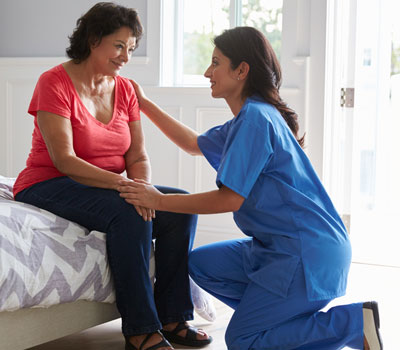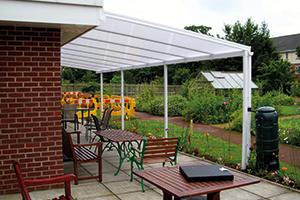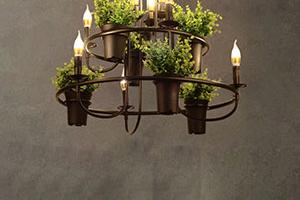With the summer in full swing and the recent pandemic situation, the need to spend time outdoors has never been so prevalent. We’ve therefore…
What makes a safe home for the elderly?
It can be very difficult to imagine what it is like to be old; especially if you are very young and in good health. But imagine you could put on a pair of glasses with ‘elderly vision’. Suddenly, you might find, the world is transformed; that there are challenges and hazards everywhere. Difficulties that, ordinarily, would never have crossed your mind.
Switching on to ‘elderly vision’ is what we must all do if we are to work to make a place safe and elderly-friendly. It involves imagination and creativity to fill the shoes of someone debilitated with age, but it is essential to do so.
This article is your elderly vision.
Read on, and together we will travel through a mundane house, identify its dangers, and discover what can be done to make it elderly friendly.
The Kitchen
Think of an ordinary kitchen, perhaps your own. Now it’s time to turn on the elderly vision. Suddenly the kitchen cabinets are either too high or too low. The pots and pans dangle from hooks that are too much of a stretch, and out of reach. The lighting is not adequate and, with your impaired vision, you cannot really see what you are doing. The kettle is awkward to lift and dangerous to pour. And the kitchen floor itself could trip you up if you aren’t careful.
A better kitchen
Those are just a couple of examples of how the kitchen can be unsafe for the elderly. How, then, can it be made safe? Perhaps the most important remedy lies in how accessible the kitchen is. The cabinets, sink and oven; especially if the kitchen is for the personal use of someone who requires a rollator or wheelchair. Plug sockets should also be within easy reach.
For the floor, try laminate or low-pile carpeting. They are low-maintenance and slip-resistant.
One way to avoid knee and waist injuries is to install a pedestal to help raise the levels of certain kitchen appliances, such as the washing machine. Drawer dishwashers and slide-away, eye-level ovens also increase accessibility and reduce the likelihood of preventable pains.
And finally, part of the answer lies in some very modern technology, such as Amazon’s Alexa, which can turn off the lights, set reminders, and even call the emergency services. This last feature could quite literally be life-saving.
Bedroom
There is less going on in the bedroom, but it can still be very poorly optimised for an elderly person. The biggest obstacle is the bed itself. That is, if the bed is too low or too high — which could lead to unnecessary strains or injury.
Then there are the usual accessibility problems. Where the light switch is can be a huge obstacle for someone challenged by age. Furniture may not be the right size, and rugs and mats may look decorative but they can slip underfoot. Bedrooms are also prone to having electric cables and extension leads running precariously over the floor — again, a trip hazard. 
A better bedroom
Fortunately, you can make a bedroom elderly-friendly quite quickly, and for not a lot of money spent. For example, if the bed is too high, a new one may be needed. If it is too small, you may be able to install risers to save purchasing a new bed.
Like in the kitchen, drawer handles should be well within reach of an elderly inhabitant, without much (if any) bending or stretching. There should be an accessible bedside lamp, and even a torch, should the occupant need to get out of the bed at night.
Alexa, or some equivalent, would be handy in here, too.
Bathroom
You don’t need a pair of elderly-vision spectacles to imagine the dangers of the bathroom, as even the most agile person can slip if they aren’t careful.
A better bathroom
By now you should be noticing a pattern of what it takes to make a house elderly-friendly: accessibility. In the bathroom, this extends to making sure the toilet seat and the sinks are at the right height, and that there are handles to help with hoisting oneself out of the bathtub. Walk-in showers are much easier to use if they can be installed. And non-slip mats really need to be considered in order to avoid preventable accidents.
Living room
Typically, the living room is one of the largest parts of any house. They also tend to be cluttered, and full of trip hazards. The furniture may also be a focal point for preventable injuries here.
A better living room
If a chair is too low, it could be a problem. A quick — and cheap — fix could be to just place a few extra cushions on the seat. But motor-raising chairs are much better in the long run. For wheelchair users and rollators, carpets and rugs can impede their use and be trip hazards on their own. In order to minimise accidents, a living room should be brightly illuminated and any decorative rugs, mats, and carpets that are risky should be removed.
Other things to consider
The little things can all add up to make the home a more comfortable experience, even if they aren’t immediately obvious or necessary — and even if, without the magic of ‘elderly vision’ we would never have thought of them.
Those are gadgets such as key-turners, automatic tin-openers (which both ease off the use of arthritic limbs) and stovetop shut-offs. Tech such as this can take the pressure off the body when it needs it the most, both mental and physical, avoiding repetitive strain injuries.
And the aforementioned Alexa, along with other virtual assistants, and things like auto-dialling alarm kits, could quite literally save a life.
—
This article was written by Thomas Drinkwater of Webster Wheelchairs, one of the NHS’s leading suppliers of wheelchairs, rollators, and other elderly and disability-friendly equipment.





